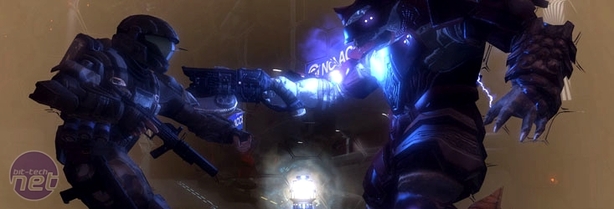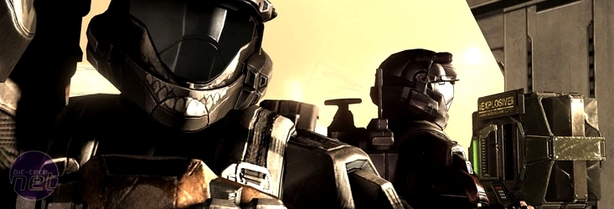
Halo 3: ODST Review
Publisher: MicrosoftPlatform: Xbox 360 Exclusive
UK Price (as reviewed): £26.99 (incl. VAT)
US Price (as reviewed): $59.99 (excl. Tax)
Bungie are obviously trying pretty hard with Halo 3: ODST to break the mould that the previous trilogy of games became so firmly set into, but if there’s thing to take away from playing ODST then it’s that they’re likely trying too hard and in the wrong areas.
Frankly, there are a few ideas and mechanics broached in ODST that are clunky enough to suggest that Bungie may have bitten off more than it can chew with ODST. That was always to be expected though and has become evident through the game’s development cycle – originally planned as an expansion, ODST has since grown into a game in it’s own right. That alone is reason enough to approach the game with suspicion.
If you’re not sure what you’re supposed to be suspicious of though then we’ll spell it out for you; padding. Half-way through playing ODST the idea started to rise in our minds that Bungie might have been doing Halo games for so long that it’s forgotten how to do anything else. The core innovations in Bungie games used to be things like alternate-reality games to expand the universes and the introduction of truly complex, evolving characters. Now they want us to get excited that they’ve changed the main character.
Not that he’s even changed all that much either, having been pretty much swapped out for a silent no-name grunt that it’s almost impossible to care about. As the game goes on it quickly becomes apparent that the mesh of supporting characters don’t care about him that much either – they don’t even learn his name, referring to him solely as The Rookie of their ODST unit.
The eponymous ODST is the Halo Universe’s version of paratroopers, by the way. Their job is to get dropped behind enemy lines as shock troopers, softening the battlefield. In this particular instance they have to drop into the city of New Mombasa to try and repel Covenant forces – or so the grunts are told. It’s clear by the presence of a Navy Intelligence that there may be more going on than you’re told in the opening cutscene – but uncovering that forms the bulk of the campaign.
In fact, finding out exactly what has happened is pretty much the sole focus of the campaign, which sees The Rookie’s drop go awry and him rousing from a coma long after everyone else. Night has fallen and the city is eerily empty when he wakes, with only a smattering of Covenant forces in the area and no allies within earshot. All he has for company is a damaged city-wide AI, who voicelessly updates his map with clues about the rest of his unit and encourages him onward.
Thus, the framework is pretty much established for the majority of the singleplayer campaign. As The Rookie you explore the city with a limited amount of freedom, defeating remaining Covenant forces and heading towards items of gear left waypointed for you by the AI, the Superintendant. When you get there you examine whichever bit of gear it is – a helmet, a gun, a discarded packet of salt and vinegar crisps marked with lipstick, whatever – and a flashback scenario ensues. Suddenly you’re someone else in the unit and you have to play through an experience of theirs.
So, yes, it’s forced and pretty formulaic – and slightly confusing how The Rookie can psychically read his surroundings – but it’s also one of the few things in Halo 3: ODST which is really all that new. All the individual moments which fit into this framework are exactly what you’d expect; more Halo 3. Forgive us for being a bit jaded, but we’re just getting a little tired of it all by this point and ODST’s claims of innovation are quickly revealed to be bloated with exaggeration.

MSI MPG Velox 100R Chassis Review
October 14 2021 | 15:04











Want to comment? Please log in.